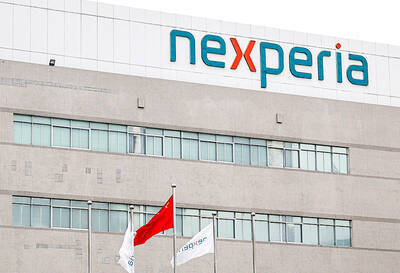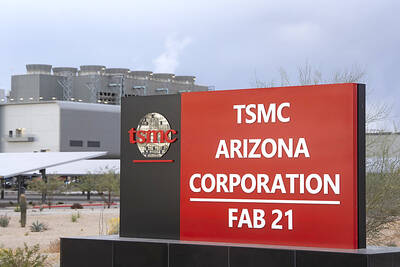Average regular monthly wages in Taiwan’s industrial and service sectors rose 2.89 percent year-on-year to NT$47,891 in July, while total compensation — including overtime, commissions and bonuses — climbed 5.48 percent to NT$65,583, the Directorate-General of Budget, Accounting and Statistics (DGBAS) said yesterday.
The median monthly wage, considered a more accurate measure of typical earnings, increased 2.46 percent to NT$38,291, indicating that many workers earned less than the average.
From January to July, the average monthly wage was NT$47,651, up 2.98 percent from the same period last year, the strongest growth in three years, the data showed.

Photo: CNA
Census Department Deputy Director Tan Wen-ling (譚文玲) attributed the rise to a combination of pay increases, a higher minimum wage and longer working hours.
Average overtime in July was 17.1 hours, up 0.9 hours year-on-year — the highest for the month in 15 years, the data showed.
Manufacturers of electronic components recorded an average of 27.7 hours of overtime per worker, the most for July since data collection began in 1980, Tan said.
Despite the gains in the average wage, the median wage has lagged, underscoring persistent wage concentration and a large share of workers earning below the mean, she said.
High-income earners are driving much of the growth in the average wage, while factors such as the proportion of new hires, job distribution and lower-wage employment limit median wage growth, she added.
Industries with average regular wages below the overall level include accommodation and food services at NT$34,977, as well as other services such as beauty and hairdressing at NT$36,598, the data showed.
Industries such as professional, scientific and technical services (NT$58,109); the information and communications, publishing and audiovisual sectors (NT$69,407); and the financial and insurance sector (NT$70,749) recorded relatively high wages.
With inflation moderating, the rise in the average wage has partially offset price pressures, boosting real purchasing power, although wage inequality remains a concern, Tan said.
The consumer price index has been within the central bank’s 2 percent target for four consecutive months, supported by the appreciation of the New Taiwan dollar.

JITTERS: Nexperia has a 20 percent market share for chips powering simpler features such as window controls, and changing supply chains could take years European carmakers are looking into ways to scratch components made with parts from China, spooked by deepening geopolitical spats playing out through chipmaker Nexperia BV and Beijing’s export controls on rare earths. To protect operations from trade ructions, several automakers are pushing major suppliers to find permanent alternatives to Chinese semiconductors, people familiar with the matter said. The industry is considering broader changes to its supply chain to adapt to shifting geopolitics, Europe’s main suppliers lobby CLEPA head Matthias Zink said. “We had some indications already — questions like: ‘How can you supply me without this dependency on China?’” Zink, who also

The number of Taiwanese working in the US rose to a record high of 137,000 last year, driven largely by Taiwan Semiconductor Manufacturing Co’s (TSMC, 台積電) rapid overseas expansion, according to government data released yesterday. A total of 666,000 Taiwanese nationals were employed abroad last year, an increase of 45,000 from 2023 and the highest level since the COVID-19 pandemic, data from the Directorate-General of Budget, Accounting and Statistics (DGBAS) showed. Overseas employment had steadily increased between 2009 and 2019, peaking at 739,000, before plunging to 319,000 in 2021 amid US-China trade tensions, global supply chain shifts, reshoring by Taiwanese companies and

Taiwan Semiconductor Manufacturing Co (TSMC, 台積電) received about NT$147 billion (US$4.71 billion) in subsidies from the US, Japanese, German and Chinese governments over the past two years for its global expansion. Financial data compiled by the world’s largest contract chipmaker showed the company secured NT$4.77 billion in subsidies from the governments in the third quarter, bringing the total for the first three quarters of the year to about NT$71.9 billion. Along with the NT$75.16 billion in financial aid TSMC received last year, the chipmaker obtained NT$147 billion in subsidies in almost two years, the data showed. The subsidies received by its subsidiaries —

OUTLOOK: Pat Gelsinger said he did not expect the heavy AI infrastructure investments by the major cloud service providers to cause an AI bubble to burst soon Building a resilient energy supply chain is crucial for Taiwan to develop artificial intelligence (AI) technology and grow its economy, former Intel Corp chief executive officer Pat Gelsinger said yesterday. Gelsinger, now a general partner at the US venture capital firm Playground Global LLC, was asked at a news conference in Taipei about his views on Taiwan’s hardware development and growing concern over an AI bubble. “Today, the greatest issue in Taiwan isn’t even in the software or in architecture. It is energy,” Gelsinger said. “You are not in the position to have a resilient energy supply chain, and that,